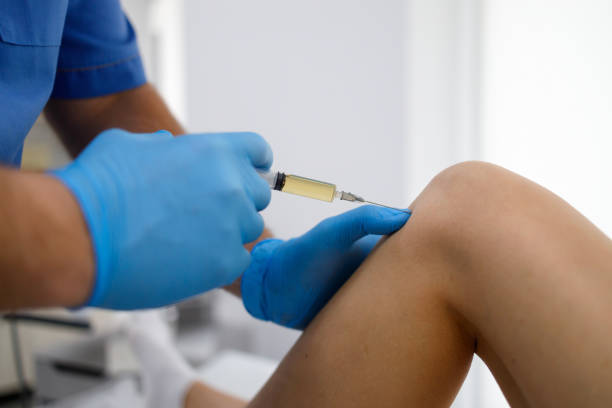Platelet-Rich Plasma (PRP) injections in Abu Dhabi have become a revolutionary treatment option for various orthopedic conditions, particularly knee pain. Utilizing the body’s natural healing processes, PRP therapy has shown promising results in treating knee osteoarthritis, injuries, and other degenerative conditions. This article provides a comprehensive overview of PRP injections for knees, their benefits, procedure, potential risks, and answers to frequently asked questions.
What Are PRP Injections?
Understanding PRP
Platelet-Rich Plasma (PRP) is a concentration of platelets derived from the patient’s blood. Platelets play a crucial role in blood clotting and contain growth factors that aid in tissue repair and regeneration. PRP therapy involves injecting this concentrated platelet solution into the damaged area to promote healing.
PRP for Knee Treatment
PRP injections for knees are specifically used to treat conditions like osteoarthritis, ligament injuries, and tendinitis. The growth factors in PRP help reduce inflammation, stimulate the healing of cartilage and tissues, and potentially slow down the progression of degenerative conditions.
How Do PRP Injections Work?
Mechanism of Action
PRP therapy works by delivering a high concentration of growth factors directly to the injured or inflamed knee joint. These growth factors enhance the body’s natural healing processes by:
- Reducing Inflammation: PRP helps decrease inflammation, which is often a source of pain and stiffness in knee conditions.
- Stimulating Tissue Regeneration: The growth factors in PRP promote the regeneration of cartilage and other tissues, aiding in the repair of damaged structures.
- Improving Joint Function: By reducing pain and inflammation, PRP injections can enhance joint mobility and overall function.
The PRP Injection Procedure
- Blood Collection: A small amount of the patient’s blood is drawn, usually from the arm.
- Centrifugation: The blood is placed in a centrifuge to separate the platelets from other blood components, resulting in a concentrated platelet-rich plasma.
- Injection: The PRP is injected directly into the knee joint under ultrasound guidance to ensure accurate placement.
Benefits of PRP Injections for Knees
Non-Surgical Treatment
PRP injections offer a non-surgical alternative for treating knee pain, providing relief without the need for invasive procedures or long recovery times.
Natural Healing
Since PRP is derived from the patient’s own blood, it harnesses the body’s natural healing mechanisms, reducing the risk of adverse reactions or complications.
Pain Reduction
Patients often experience significant pain reduction following PRP therapy, allowing for improved mobility and quality of life.
Potential to Delay Surgery
For some patients, PRP injections can delay the need for knee surgery by managing symptoms and promoting healing in the early stages of degenerative conditions.
Potential Risks and Side Effects
Common Side Effects
- Pain at Injection Site: Some patients may experience temporary pain or discomfort at the injection site.
- Swelling and Bruising: Mild swelling and bruising are common and typically resolve within a few days.
Serious Risks
While rare, potential serious risks include:
- Infection: As with any injection, there is a small risk of infection.
- Tissue Damage: Incorrect injection technique can potentially cause tissue damage.
FAQs About PRP Injections for Knees
What Conditions Can PRP Treat in the Knees?
PRP injections are commonly used to treat knee osteoarthritis, ligament injuries (such as ACL tears), tendinitis, and chronic knee pain.
How Many PRP Injections Are Needed?
The number of PRP injections required varies depending on the condition and its severity. Typically, patients may need 1-3 injections spaced several weeks apart.
When Can I Expect to See Results?
Most patients begin to notice improvement within a few weeks, with optimal results typically seen after 3-6 months.
Is PRP Covered by Insurance?
PRP therapy is often considered experimental by insurance companies and may not be covered. Patients should check with their insurance provider for specific coverage details.
Can Anyone Get PRP Injections?
While PRP therapy is suitable for many patients, it may not be recommended for those with certain medical conditions, such as active infections, cancer, or blood disorders. A consultation with a healthcare provider is necessary to determine eligibility.
Are PRP Injections Painful?
Patients may experience some discomfort during the injection, but this is usually minimal. A local anesthetic may be used to reduce pain at the injection site.
Conclusion
PRP injections for knees offer a promising, non-surgical treatment option for patients suffering from knee pain and degenerative conditions. By leveraging the body’s natural healing processes, PRP therapy can reduce pain, improve joint function, and potentially delay the need for more invasive treatments. As with any medical procedure, it is essential to consult with a healthcare provider to determine if PRP therapy is the right choice for your specific condition. With continued advancements and growing clinical evidence, PRP injections are poised to play a significant role in the future of orthopedic treatments.





Comments